When you own or drive a vehicle, it is not enough that you gas it up, clean it, and have it regularly maintained by a mechanic. You must also learn some of the basics of keeping your car working efficiently so that you don’t have to bring it to the mechanic each and every time. Some of the things that you can do on your own include refilling the brake fluid, cleaning the battery terminals, and knowing how to put water in a car radiator as well as what to put in it.
Today, Philkotse.com will focus on discussing some of the most important information that you need to know about car radiators, as well as on how to fill it up and what you should use.
1. What is a Car Radiator and How Does It Work?
First off, let us take a deeper understanding of car radiators so that you would know how important it is that you keep it filled up with fluid. Most of us, if not all, are aware of the fact that vehicle engines work with the help of gas, a battery, and electrical circuits. In that sense, when the car is turned ON, its temperature will increase. In any situation, an increase in temperature is dangerous and, in this case, it might damage the car’s engine.
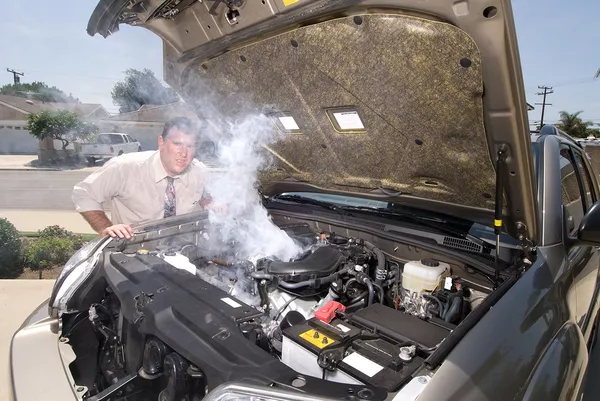
A car overheats when the radiator does not work well
To ensure safety and maintain the functionality of the engine, a radiator is incorporated. In the simplest term, it works as a heat exchanger, and with the help of water-based fluids or water, it helps circulate cool air within and around the car’s engine. Taking that into consideration, once the radiator lacks or is emptied out of fluid, it would not be able to work as expected, leaving your car’s engine to overheat.
2. Should You Put Water or Coolant?
When you go to an auto-parts store or shop, you will find a lot of radiator fluid or the so-called car radiator coolant or anti-freeze. This makes you wonder why some people even suggest that you use water in your car radiator. This has been a long debate, and some experts have already found the right answer and, of course, Philkotse.com will willingly share it with you.
Generally speaking, choosing between using water and coolant will depend on your location’s weather condition. Here in the Philippines, it really wouldn’t make sense to use a coolant since it is designed to prevent freezing, which could only occur during winter months, and obviously, we don’t have that season.
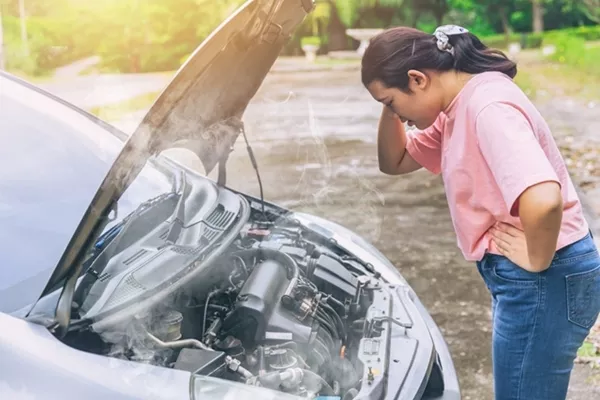
Once the radiator lacks or is emptied out of fluid, your car’s engine might be left to overheat
However, water boils at 100C, and that can pose danger especially when driving during the summer months. Additionally, tap water is loaded with minerals that can leave deposits in your radiator as well as corrode it. The good thing though is that distilled or purified water can resolve both of those problems. From its name itself, it no longer contains the compounds that precipitate. Likewise, it has a higher boiling point.
On the contrary, coolants have a lower boiling point than water, so they are also efficient during hot days. Such a characteristic though poses a problem, and that is the formation of steam. Since the coolant would hardly reach its boiling point during normal car operations, it instead forms a vapor that can affect the car’s cooling system. Corrosion-wise, newly released coolants already contain anti-rust substances.
>>> Related: 3 symptoms of a bad radiator cap & replacement cost
So, which is the best?
Since both have drawbacks that can affect the performance of your car’s cooling system, the solution is to mix the two fluids. That would be one part of distilled water and one part of coolant (50/50) or 40/60.
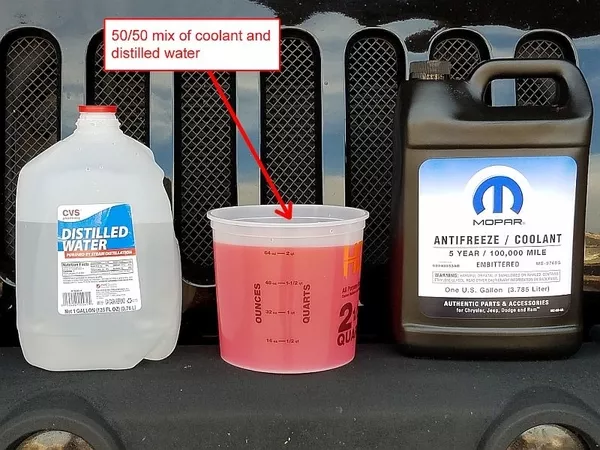
Balance it out by mixing distilled water and coolant
3. How to Put Water in a Car Radiator?
At this point, it should be clear that when we say water, we mean that it is a mixture of coolant and clean water. Also, take note that if your car has pressurized coolant recovery or exhaust heat recovery system, you no longer have to perform the process we are about to discuss.
Step One: Safety First
If you have just driven and realized that your car radiator water might be low, park properly and turn off the car. At this point, the car’s engine would be hot, so don’t attempt to touch it. You may open the hood to let it cool faster.
Step Two: Locate and Open the Radiator Cap
When the engine cools down, look for the radiator cap. For your safety, get a cloth and put it on top of the radiator cap (you may also use a pair of gloves), and carefully turn it counterclockwise. When you feel the first stop or click, stop for a while to allow the steam or pressure to escape.
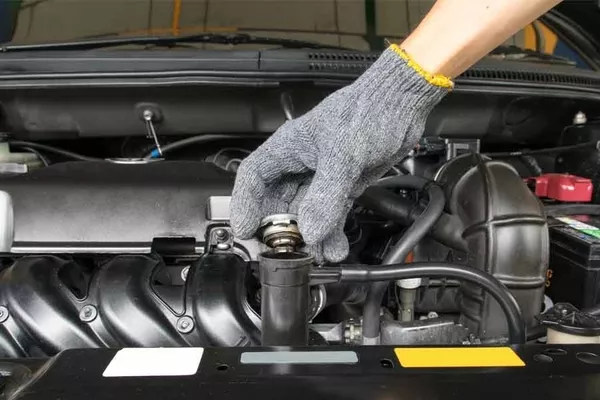
Protect your hand from the heat!
If, in case, the steam coming out is too much, close the cap as this means that the liquid inside is still boiling. Wait for about five minutes and repeat the process. When you can no longer observe any steam coming out, then completely open and remove the cap.
Step Three: Check Approximate Coolant Level
This step is important because it can help you estimate how much water you need to put. When you peep through the radiator tank, some cars will have a “max” and ‘min” mark, while others don’t. Other cars are equipped with a stick-like tool (dipstick) that can be used to check the level.
You just need to dip it in the radiator tank hole until it touches the bottom, then release it. The part where the wetness stops is the approximate amount of liquid present.
Step Four: Refill and Re-Cap
Get your water and coolant mixture and carefully refill the radiator tank. You can use a funnel to assist you. Make sure not to overfill it. Ideally, there should be at least one inch or 2.5 centimeters room from the top. Once done, place the radiator cap back and turn it clockwise.
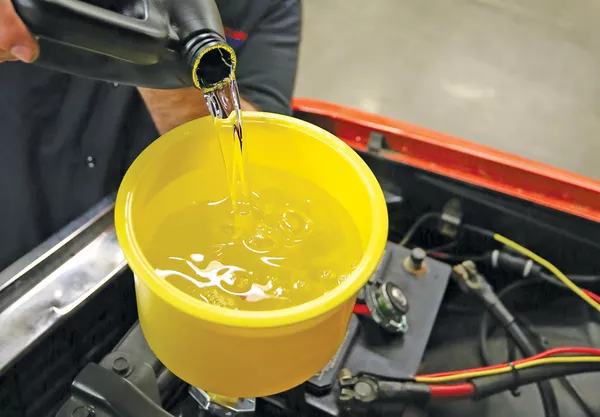
A good old funnel comes in handy at this point
4. Check and Refill Your Car’s Radiator Regularly
The method on how to put water in a car radiator is definitely not rocket science and does not require any special tools since all you need is an item to protect your hands from the heat, an item to assist you in refilling, and the liquid. For you not to be in situations wherein your car’s engine is about to overheat and to make sure that you won’t face car radiator empty problems, always check the level of your radiator liquid and refill if necessary before you go on a long drive or after a week or two of constant driving.
Follow Philkotse.com for more useful car maintenance tips and keep your beloved vehicle in healthy condition!
Recent posts
- symptoms of a bad radiator cap Mar 06, 2021
- Step-by-step guide to check and replace a failing car radiator Nov 30, 2022
- Distilled water vs Coolant: Which is the best product for your radiator? Mar 06, 2021











